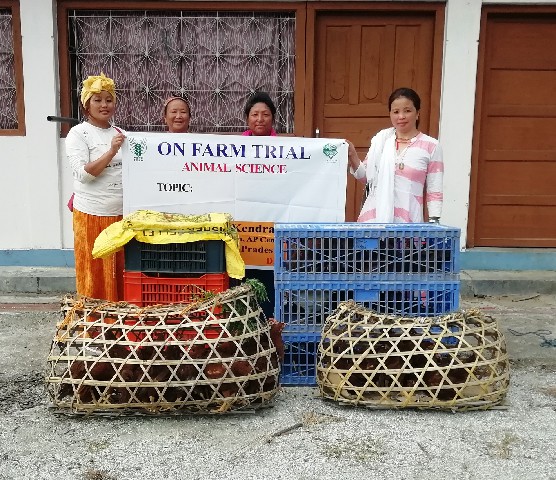Performance Assessment of Improvement Poultry bird Kalinga Brown
Anjaw district is situated on the north-eastern tip of India dominated by tribal population uses livestock and poultry bird not only for table purpose but cultural ceremony too. Therefore, to fill the gap of demand and supply of poultry has great scope for poultry farming through improve breed that can fetch greater income and sustained farmers livelihood. Chicken is a delicacy next to pork and fish for people of Anjaw district however, reared local bird under traditional system causes small body weight, poor food conversion ratio and egg laying capacity of local bird. Therefore, a dual purpose poultry breed Kalinga brown developed CPDO&TI and CPDO(ER) were introduced and performances were observed in local climatic condition of Anjaw District. The performance of Kalinga Brown bird evaluated on body weight gain, feed conversion ratio, mortality of bird during and post brooding period, egg laying capacity in comparison of local bird. 200 bird was procured from Govt. Duck & Poultry Farm, Joysagar, Sibasagar, Jorhat, Assam and brood at KVK poultry Unit and distributed to 11 No. of farmers from Walong and Hayuliang Circle. Kalinga Brown male and female attain average 2.6 and 1.6 kg body weight at the age of 180days. However, the body weight of cock and pullets of local birds was 1.5 and 1.2 kg. Body weight at age of 180 days was higher by 73.24 & 33.34 percent over local bird. Egg production and FCR was improved by 33.63 and 97.16 percent over the local bird.
Table 1: Body weight gain (Male & Female)
| Age (days) | KB Male (g) | Local Male (g) | LKB Female (g) | Local Female (g) |
|---|---|---|---|---|
| 15 | 75 | 45 | 68 | 40 |
| 60 | 900 | 400 | 700 | 350 |
| 120 | 1800 | 690 | 1200 | 900 |
| 180 | 2600 | 1500 | 1600 | 1200 |
Table2: Egg production performance of Kalinga Brown
| Particulars | Kalinga Brown | Local Bird |
|---|---|---|
| FCR | 2.17 | 3.27 |
| Age at First egg Laying (Day) | 165 | 195 |
| Monthly Egg Production (No.) | 23.66 | 12 |
| Percent hen day egg production | 78.88 | 44 |
Overall mortality in Kalinga Brown was reported 22 percent. However, mortality during brood and post brooding period was 15& 7 percent. Thus a good brooding facility and bio-security measures is require to reduce the mortality.

